Pop Culture Pulse: Flashback for Election Season 2016 — gender, toys, and politics.
by broadstreetmag on Oct 20, 2016 • 2:29 pm No CommentsHow we play says who we are … and how we vote.

Pop culture has always reflected on and responded to gender and politics. And more than that — what we play with and how we play helps determine who we are. So what may seem like a happy little diversion in this piece actually has a lot to say about the 2016 presidential election. Read on — if you dare.
Slim figures (or not), pantsuits, beauty competitions, commerce, and grabbability have been in high focus during the 2016 presidential campaigns.
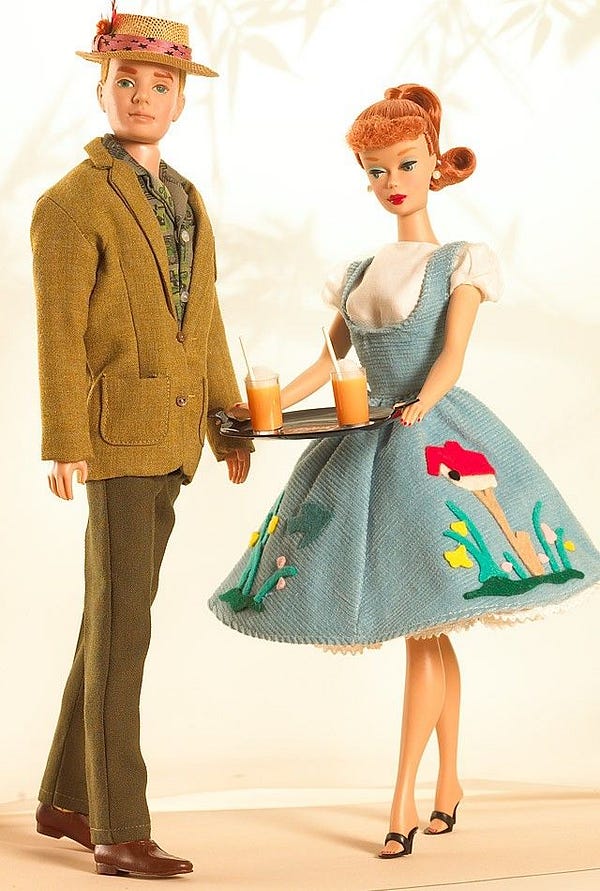
So maybe, in the spirit of seeing how far we’ve come and how we got here, it’s time to think about the toys that helped make us all who we are.
So herewith we present a few thoughts about little girls in the U.S., their history, their dreams, their bodies, and the engines of good business.
Not to mention the engines of politics that have pushed Hillary Rodham Clinton and Donald Trump to the front of the presidential line.
They are players, too. And so are you.
Grab hold of your favorite toy and begin …
*******************************************************************
If you’ve spent time in our pages or on our website, you know we love to chat about the meaning of Mattel’s biggest success story: Barbie.
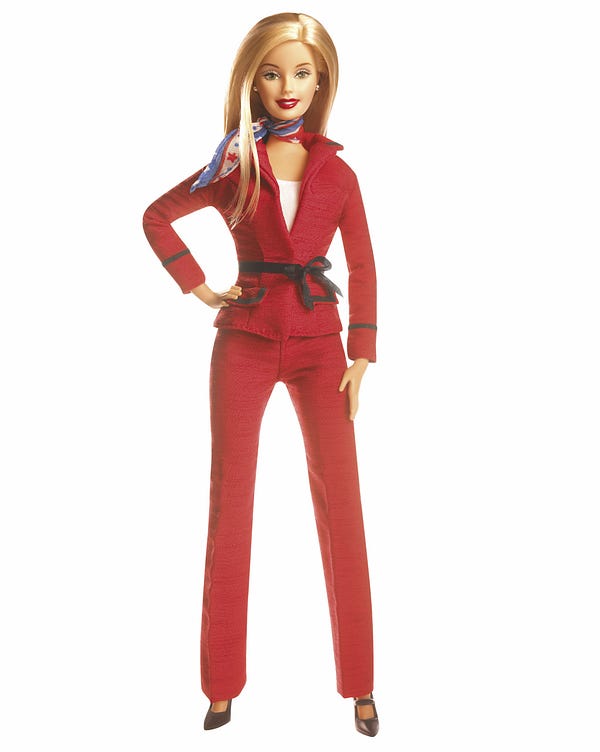
In her heyday, Barbie was a revolutionary figure, a “teenage fashion model” 11.5 inches high. She came to have many other careers, from artist to doctor to pilot. She has even run for president several times (it was a marketing ploy, true, but there was still a real message underneath). In 2004 her campaign outfit was a red power suit, just a little curvier than the pantsuits worn by Hillary Rodham Clinton during her campaign.
Barbie may not always have been a politician, but she has drawn her share of controversy — most noticeably for being “too sexy,” in a way that encouraged impossible body goals for the girls who played with her.
Barbie’s backstory might seem to support that idea. Ruth Handler, a founding member of Mattel, brought the plastic toy to America in the late 1950s, after she’d seen a similar doll in German toy store windows.
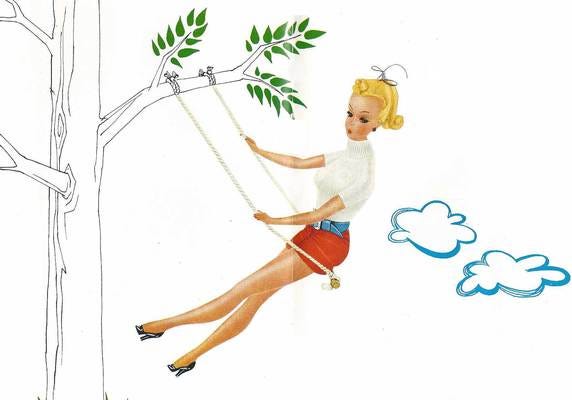
Lilli, Barbie’s prototype, was modeled after a gold-digging comic-strip character in Das Bild,a German newspaper. She was packaged for grown-up German men to laugh at.
Handler had her engineers adapt Lilli, keeping the flirty eyes and curvy figure. She named the new toy after her daughter and launched Barbie during an industry fair in 1959.
Barbie wasn’t a hit at that fair. The mostly male buyers for big toy stores couldn’t imagine why a little girl would want to play with a three-dimensional “teenager.” And they were uncomfortable with Barbie’s now-famous shape.
Most of all, say some toy historians, they were bothered that Barbie came in three dimensions.
At the time, American girls typically went from playing with baby dolls, which trained them to be mothers, to more mature paper dolls, which trained them to dress well and snag husbands.
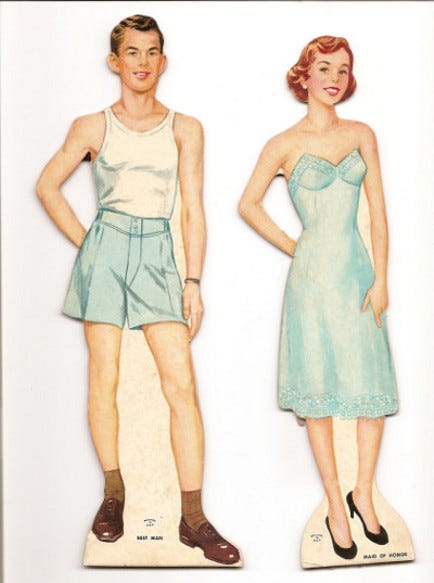
The paper clothes were easy to change with a set of tabs that fit around the two-dimensional cardboard girl. Little girls learned self-control from cutting carefully along the lines in printed books of outfits, then fitting the outfits to their cardboard dolls by means of bendable paper tabs.
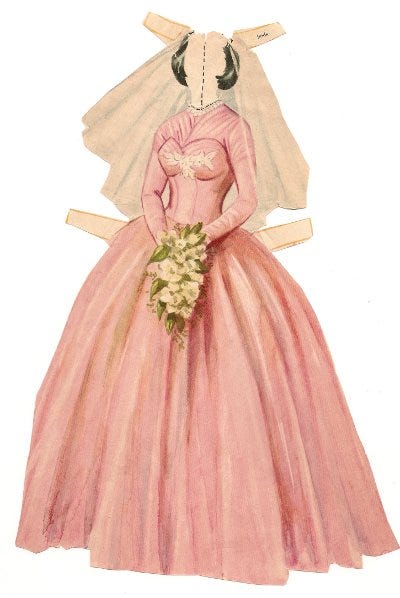
Cardboard curves were okay, especially if they involved a wedding gown. It was even fine to market a boy and a girl in their underwear, if wedding clothes were included.
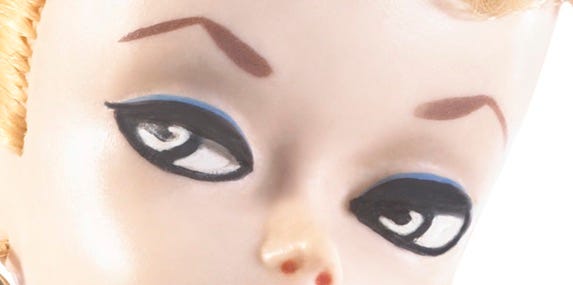
So to those male buyers at the 1959 toy fair, Barbie was something else. And not in a good way.
Incidentally, about that famous figure: Toy historians and Mattel execs will be quick to point out that Barbie’s shape was dictated in part by the fact that she had to wear clothes made out of real-world fabrics — no doll-scale fabrics can be manufactured. The seams give Barbie’s waist a good deal of bulk, on just about any version of the doll you play with.
*******************************************************************
The male toy industry execs had been able to relate much better to the Burp Gun, which first launched Mattel into the stratosphere.

Commercials airing on The Mickey Mouse Club showed what fun the Burp Gun was-–not just “the only fully automatic cap gun in the world, you know, real safe”-–it was also “swell”!
Mattel could have stayed known for the Burp and nothing else.
But savvy after-school TV commercials reached little girls too, and soon they were clamoring for Barbie and her outfits. Barbie became an industry of her own.
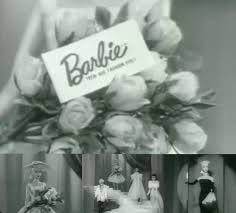
Soon Barbie — followed by Ken, Skipper, Cousin Francie, and the whole gang — ruled young girls’ playtime. The dolls were perpetual teenagers, but they had super jobs, and the engendering of those jobs changed over the years. For example, Barbie started out as a “teenage fashion model” and became a designer, a stewardess, a doctor, an astronaut, and (yes) a presidential candidate.

*****************************************************************
Barbie’s standing is somewhat diminished now.
Bratz and other dolls have partly taken the place of the Mattel family, and girls have been raised with mixed feelings about beauty pageants–-and weddings-–and being identified with a man.
Barbie’s famous figure has changed, too. The Fashionista line of dolls, introduced in 2016, features all kinds of shapes — from tall to petite to voluptuous (a.k.a “curvy.”

If you’re very cynical, you might see Barbie’s latest makeover as more than a nod to body-posi movements. After all, each shape requires its own clothing line as well.
Coincidentally, just as HRC became the first woman ever to be a serious contender for president, female curves have come in for more scrutiny than ever.

As owner of the Miss Universe pageant business, Trump famously insulted the 1996 winner, Alicia Machado, for growing as fat as a “pig.” In one scandalous event, he took a team into the gym where she was working out and said, “This is somebody who likes to eat.”
You can read about his controversial remarks and watch him and Clinton discussing the event during a presidential debate, on the New York Times website here.
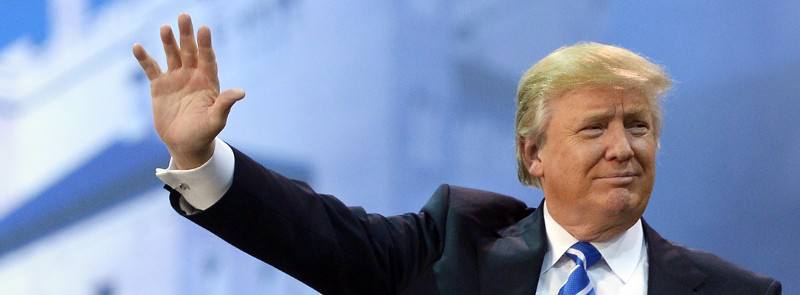
And then there’s that famous 2005 “grab ’em by the pussy” remark that surfaced — on video — a few weeks before the election itself:
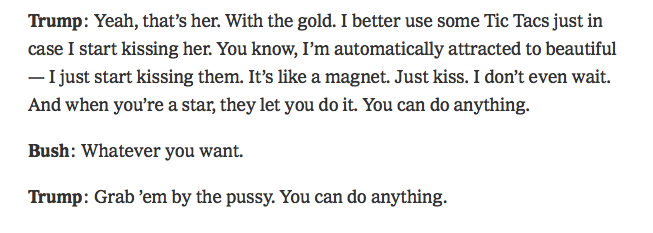
It’s a moment that will live on in pop culture as well as politics. The two are closer than we sometimes think.
And one day a girl who probably played with Barbie — in some shape or form — will be president.
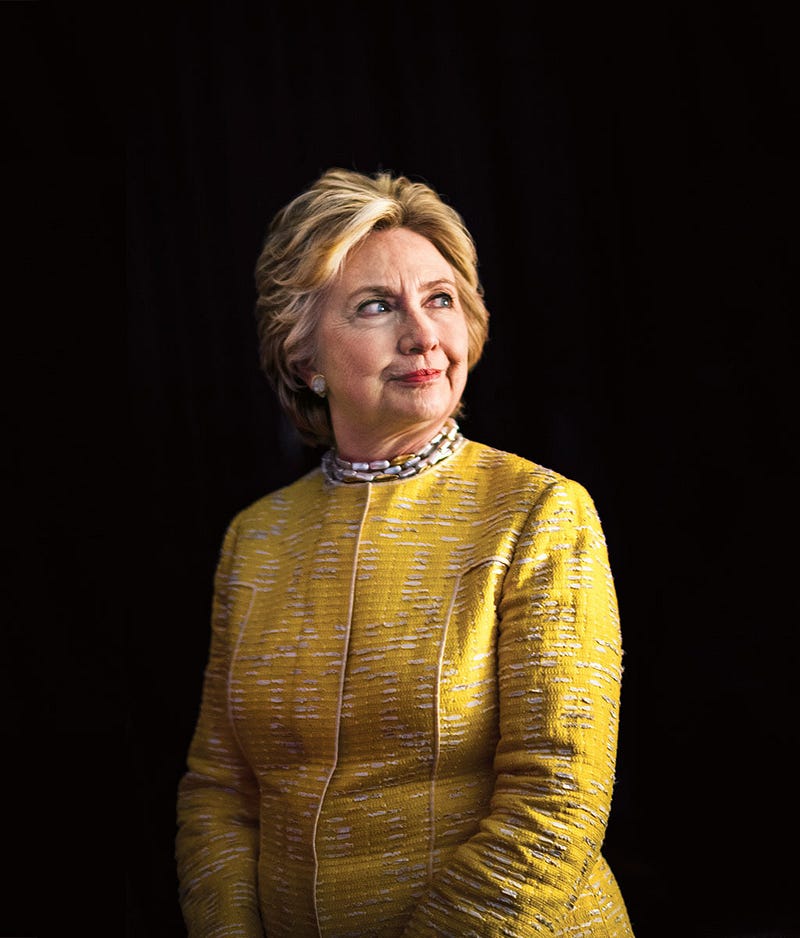
*****************************************************************
So in the spirit of seeing how far we’ve come and how we got stuck here, it’s time to enjoy a video compilation of Mattel commercials. Barbie and Ken are featured along with other toys.
You can also tour the Mattel factories in a mini-documentary the company put out in the 1950s. You’ll see a man make a jack-in-the-box … because it’s fun to be surprised when a brightly painted clown bursts out of a tin cube to grab at you.
******************************************************************
BROAD STREET invites you to check out a few related pieces on our website:
 “The Election Through Millennial Eyes: One Teen’s Hopeful Take on the Morning After,” by Emily Hayes-Rich.
“The Election Through Millennial Eyes: One Teen’s Hopeful Take on the Morning After,” by Emily Hayes-Rich.“Making Friends with Midge,” on the complicated tale of Barbie’s bff and female friendship, by Susann Cokal.
“Abby Is Tall and Blonde,” on being summed up by a few Barbie-ish qualities, by Abby Otte.
“Religion, Art, and Advertising,” in which Scientology ads featuring Daniel M. Krause’s sculptures occasion reflection on mass marketing and pithy pronouncements from Mark Fenske, by Jamal Stone.
Image: Emily Hayes-Rich.

sc 10.16, 6.18.








